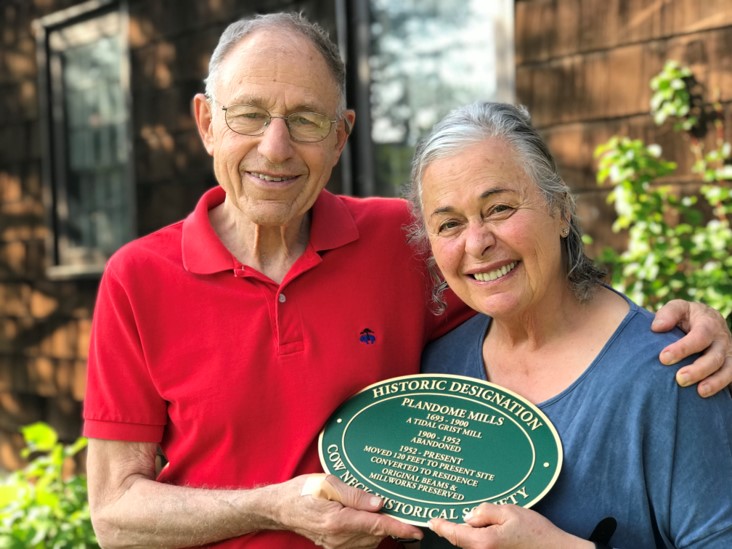
Shortly after coming to the colonies in 1664, Mathias Nicolls (1630-1687) purchased 200 acres of land on the Cow Neck Peninsula and built one of the first manor homes on Long Island. He named it Plandome Manor. He and subsequent owners acquired adjoining properties that they developed into a self-sustaining estate surrounding the manor home.
In 1693 his son William Nicolls inherited Plandome Manor and commissioned Joseph Lapham to build a grist mill on Gildersleeves Creek (Leeds Pond). Twenty-five years later, Joseph purchased the property that included both the mill and the Nicolls manor home. While the estate, which had been as large as 2,000 acres, was divided and sold over time, the prominent families who lived there preserved the Nicolls house and the mill into the twentieth century, when the story of these two properties went in different directions.
Plandome Mills became idle and was abandoned in 1906. Forty-five years later, the town proposed to destroy the mill in order to widen Plandome Road. The Packard family came to the rescue. They bought the mill, moved it 100 feet back from the causeway, and converted it into a residence.
The Packards and subsequent owners have preserved much of its character. Its cupola is a familiar landmark on the road between Port Washington and Manhasset, and its basic structure is intact. Inside, 9’ by 17’ oak beams are exposed and joined by locust pegs. Artifacts from the original mill are on display: grain hoppers, grinding stones, and the bull gear that once turned the casters.
Although the converted mill does not qualify for landmarking protection, the current owners, Ted and Judy Goldsmith, applied for and obtained a Historic Designation plaque from the Cow Neck Peninsula Historical Society. Mr. Goldsmith believes “the plaque will add value to our property without imposing restrictions on a potential buyer. When the time comes, it will help attract the kind of preservation-minded buyer that we hope to find.”
Meanwhile, the Nicolls Home was still standing as recently as 1998, surrounded by a salt-box cottage for settlers, a hut used for forging iron, a long low woodshed, and an ice house that at one time had been used to hide fugitive slaves. It was a living reminder of life on Long Island in colonial times, but when the property changed hands, the manor home, history took a dark turn.
In spite of having expressed his intent to preserve the house, the new owner petitioned the Village for permission to demolish and replace it. Then, in spite of objections from the Village Board and protests from the community, he acted on his plan. In a matter of days, a landmark with 300 years of history was erased from the landscape.
With little public support for the government to shoulder the expense of historic preservation, the fate of our cultural heritage is often subject to the character of individual property owners. What this can mean for the common good of the community is illustrated in the sometimes inspiring and sometimes disheartening history of the Nicolls home and its mill in Plandome Manor.
Ross Lumpkin is a trustee at the Cow Neck Peninsula Historical Society, www.cowneck.org



